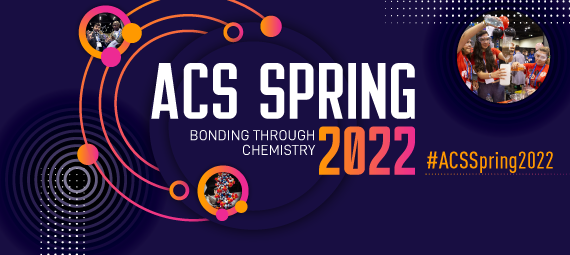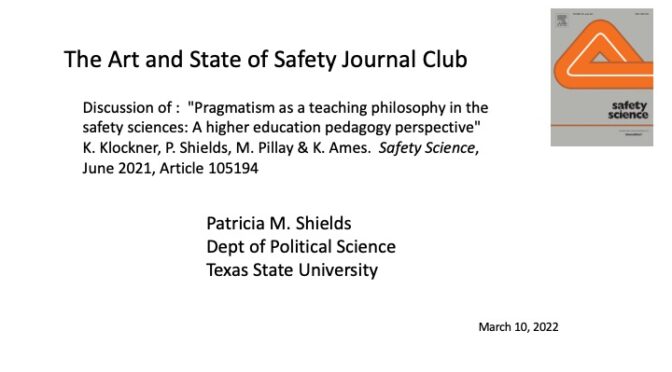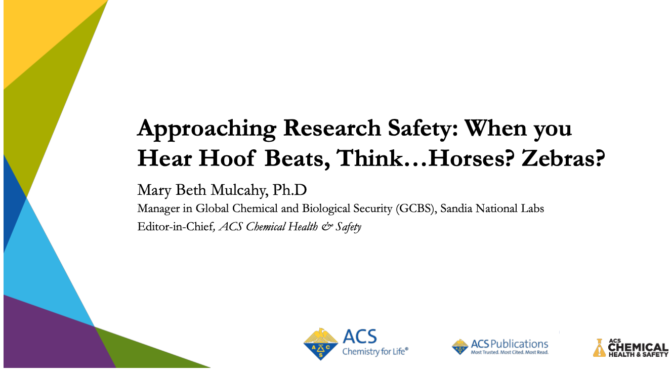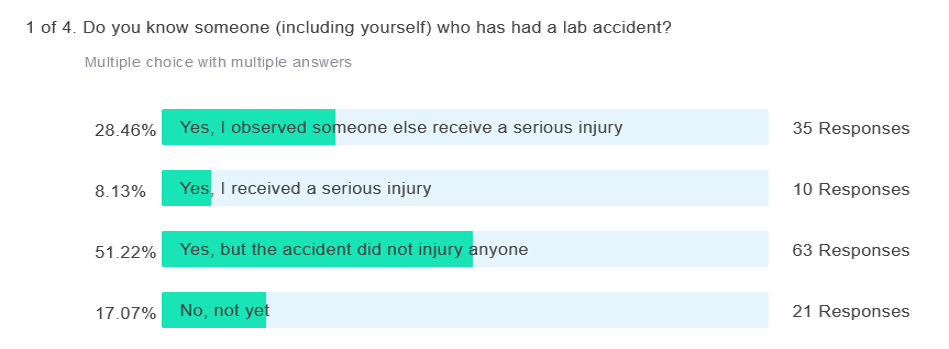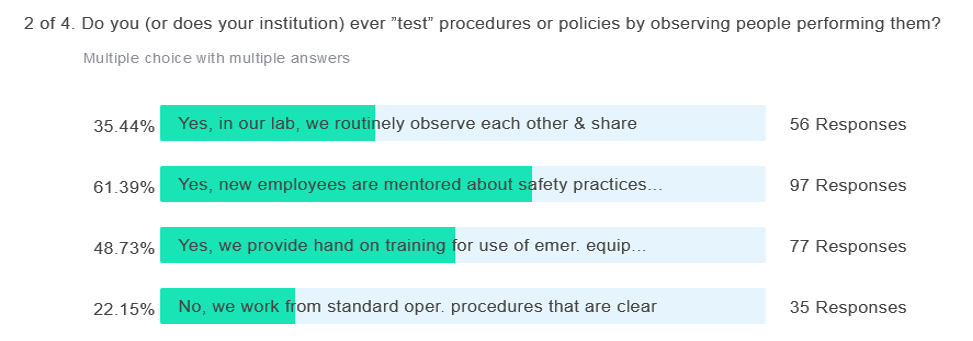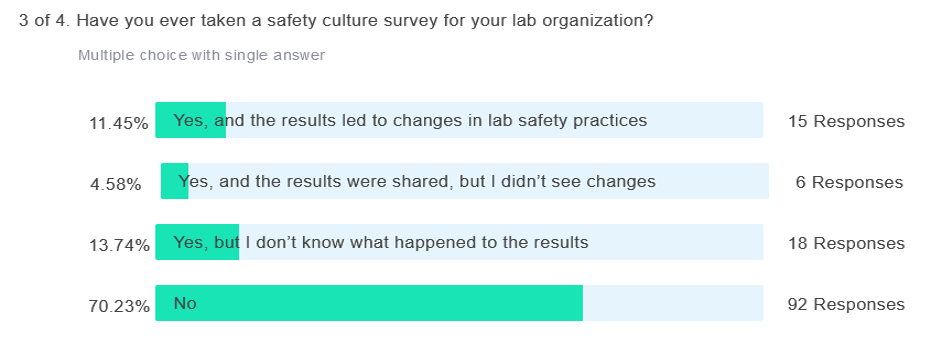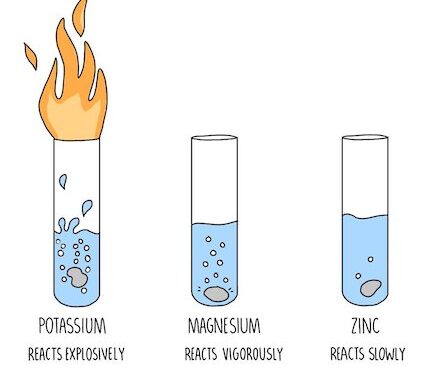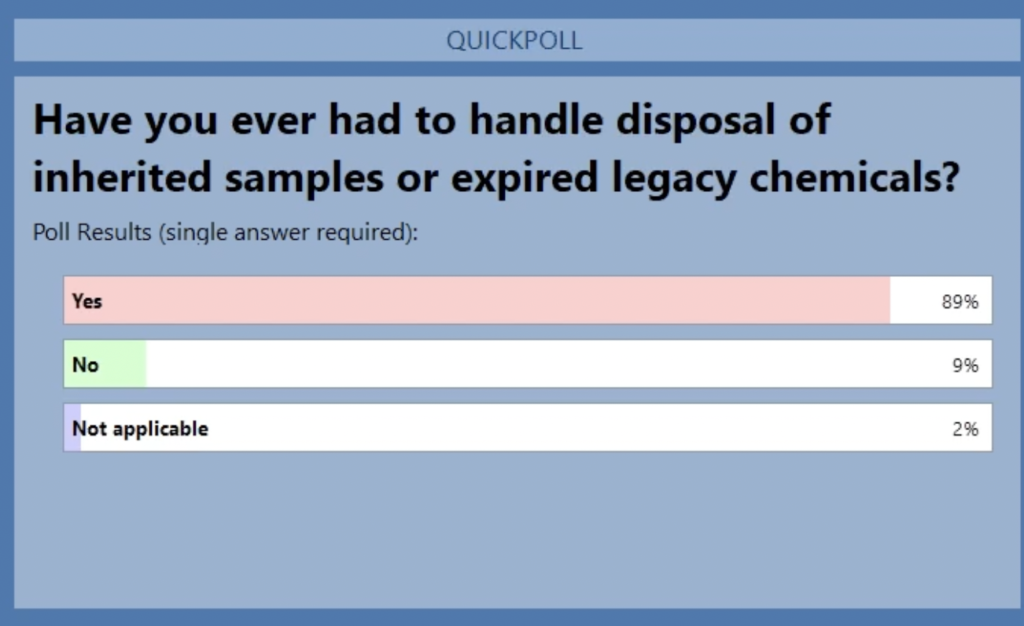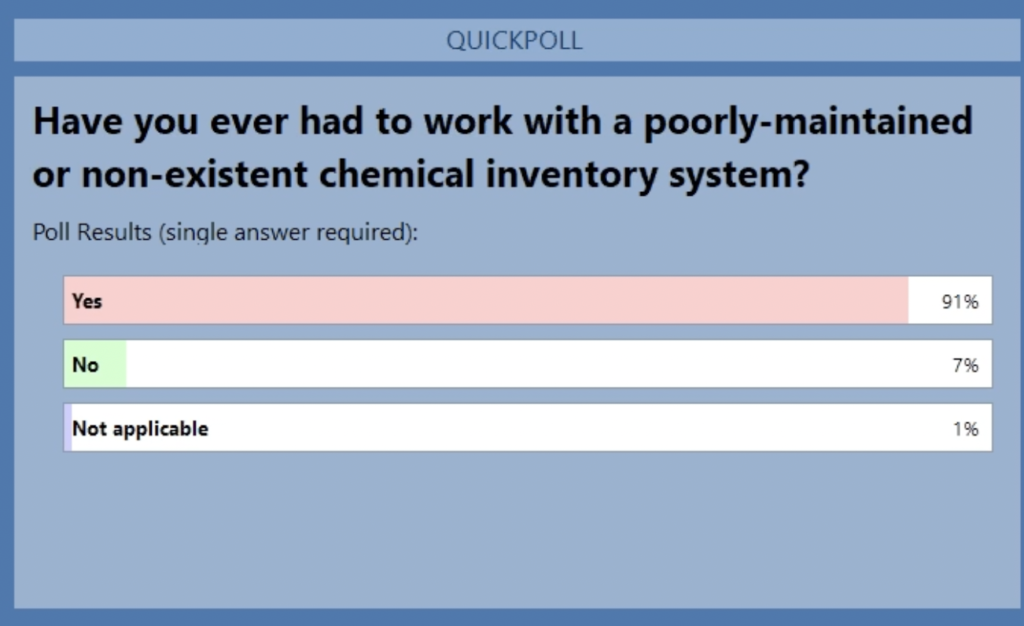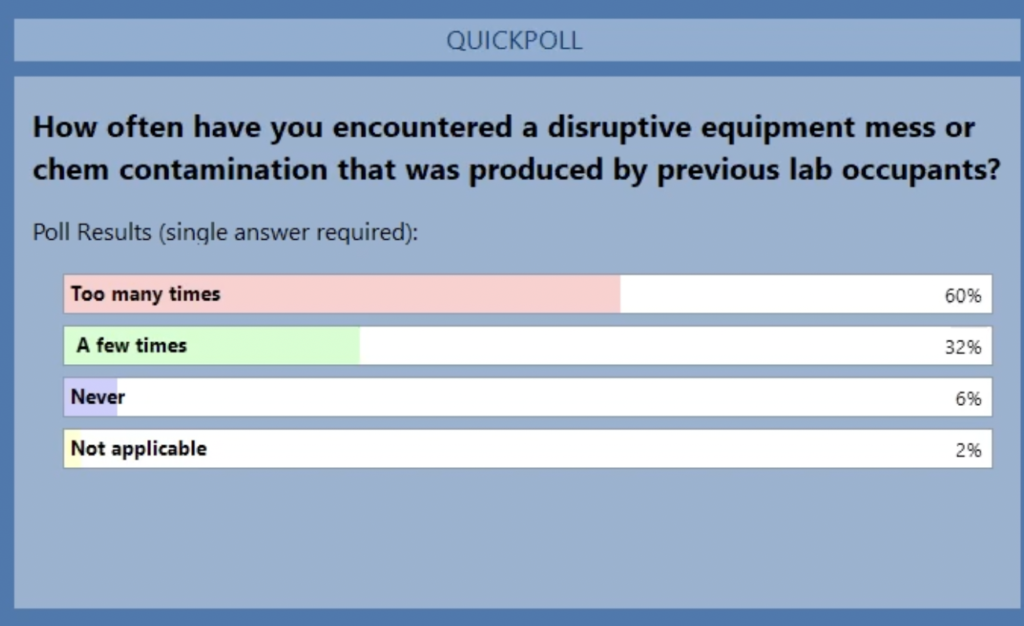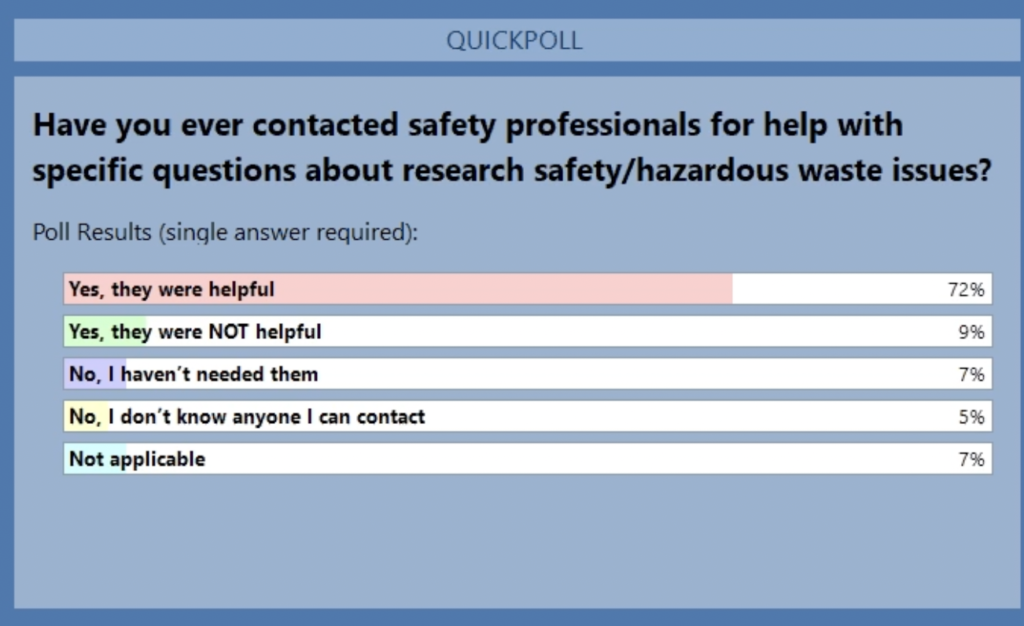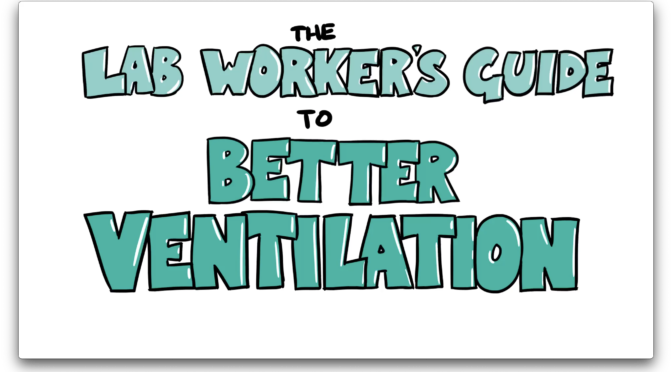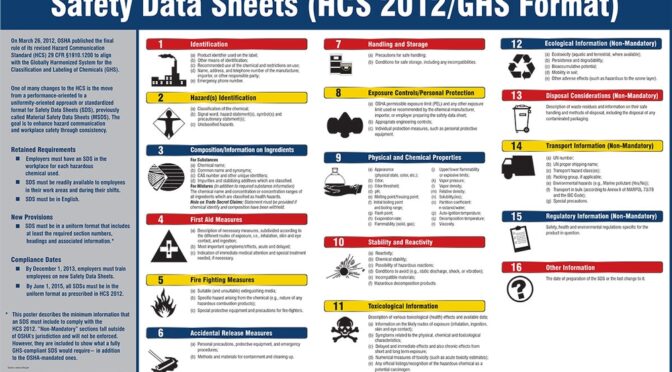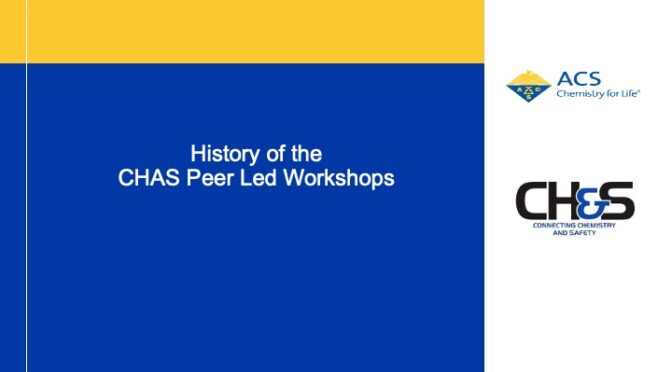On March 10, Dr. Patricia Shields discussed the article she co-authored with three safety professionals about using “pragmatism” as a safety philosophy in the safety sciences. Her summary powerpoint and the comments form the table read of this article are below.
The full paper can be found here: https://www.sciencedirect.com/science/article/pii/S0925753520304926?casa_token=gG7VtvjEqqsAAAAA:Of4B_mGRk-HwwH-q_WQLybg2zDGPtjcYVFCg0ZgnYe5riPefhOJ6nDCGF2YwjMrhSR2wGfIABg
Excerpts from “Pragmatism as a teaching philosophy in the safety sciences: A higher education pedagogy perspective”
03/03 Table Read for The Art & State of Safety Journal Club
Excerpts from “Pragmatism as a teaching philosophy in the safety sciences: A higher education pedagogy perspective”
Full paper can be found here: https://www.sciencedirect.com/science/article/pii/S0925753520304926?casa_token=gG7VtvjEqqsAAAAA:Of4B_mGRk-HwwH-q_WQLybg2zDGPtjcYVFCg0ZgnYe5riPefhOJ6nDCGF2YwjMrhSR2wGfIABg
Meeting Plan
- (5 minutes) Jessica to open meeting
- (15 minutes) All participants read complete document
- (10 minutes) All participants use “Comments” function to share thoughts
- (10 minutes) All participants read others’ Comments & respond
- (10 minutes) All participants return to their own Comments & respond
- (5 minutes) Jessica announces next week’s plans & closes meeting
- Introduction
(FYI, most of the Introduction has been cut)
Elkjaer (2009) has previously alluded to this lack of appreciation and value of pragmatism ‘as a relevant learning theory’ (p. 91) in spite of the growing recognition of its important role in education and teaching (Dewey, 1923, 1938; Garrison and Neiman, 2003; Shields, 2003a; Sharma et al., 2018), scholarship and academic development (Bradley, 2001), academic practice (Shields, 2004; 2006), curriculum (Biesta, 2014) and online learning (Jayanti and Singh, 2009). This article, therefore, addresses this anomaly by arguing for the appropriateness of pragmatism as a highly relevant philosophical cornerstone, especially for safety science educators[a].
2. The Scholarship of Learning and Teaching (SoLT)
(FYI, this section has been cut)
3. Pragmatism as a teaching philosophy
3.1. Teaching philosophies
(FYI, most of this section has been cut)
The research paradigms used extensively in higher education are positivism and interpretivism and are often being cited by faculty as influencing their teaching philosophy (Cohen et al., 2006). These two are usually associated with quantitative and qualitative research methods respectively but both prove problematic for the teaching of the safety sciences. First, safety science relies on both quantitative and qualitative methods. Second, neither uses a ‘problem’ orientation in its approach to methods and safety science is inherently problem and practice oriented and certainly should be with respect to its teaching.[b][c][d]
Third, the mixed methods literature has recognized this drawback and adopted pragmatism as their research paradigm because it takes the research problem as its point of departure (Johnson and Onwuegbuzie, 2004). In contrast to positivism and interpretivism, pragmatism holds the view that the research question that needs to be answered is more important than either the philosophical stance or the methods that support such stance. Pragmatism is traditionally embraced as the paradigm of mixed methods hence, it turns the incompatibility theory on its head by combining qualitative and quantitative research approaches, and “offers an immediate and useful middle position philosophically and methodologically; a practical and outcome-oriented method of inquiry that is based on action and leads” (Johnson and Onwuegbunzie, 2004, p. 17). The pluralism of pragmatism allows it to work across and within methodological and theoretical approaches, which for the purpose of the intent of this paper is consistent with a safety science multi-disciplinary approach.
This places practice, where the problem must originate, as an important component of mixed methods. This practice orientation resonates with the goals of learning and teaching in safety science. Therefore, presented here is the philosophy of ‘pragmatism’ which we argue is much better suited for guiding or informing safety science teaching endeavours.
3.2. The foundations of pragmatism
(FYI, this section has been cut)
3.3. Value of pragmatism for the safety sciences
(FYI, this section has been cut)
4. Safety science higher education in Australia
(FYI, this section has been cut)
5. Pragmatism and evidence informed practice (EIP)
Safety science education has traditionally taken an evidence-informed practice (EIP) stance for its teaching practice. Evidence informed practice is not a one-dimensional concept and its definition is still under debate with various academic lenses being applied to the notion of ‘research as evidence’ and how EIP can be measured (Nelson and Campbell, 2017). However, Bryk (2015) is attributed to offering up the view that EIP is a “fine-grained practice-relevant knowledge, generated by educators, which can be applied formatively to support professional learning and student achievement” (Nelson and Campbell, p. 129).[e]
This includes the expectation that students will be able to use their theoretical knowledge, gained through their academic studies, including research in the field, and translate this knowledge into practical applications in the real world[f][g][h][i][j][k][l][m][n][o]. There are continued efforts to recognise these Research to Practice (RtP) endeavours, as an example, the Journal of Safety, Health and Environmental Research in 2012 devoted an issue to ‘Bridging the Gap Between Academia and the Safety, Health and Environmental (SH&E) Practitioner. The issue demonstrated “the vital role of transferring SH&E knowledge and interventions into highly effective prevention practices for improving worker safety and health” (Choi et al., 2012, p.1). In that issue Chen et al. (2012, p. 27) found that the ‘Singapore Workplace Safety and Health Research Agenda: Research-to-Practice’ prioritizes, first, organisational and business aspects of work place health and safety (WHS) and second, WHS risks and solutions.
Other researchers in that same issue (Loushine, 2012, p. 19) examined ‘The Importance of Scientific Training for Authors of Occupational Safety Publications’ and found that there needs to be “attention on the coordination of research and publication efforts between practitioners and academics/researchers to validate and advance the safety field body of knowledge” (p. 19).
Shields (1998) introduced the notion of ‘classical pragmatism’ as a way to address the academic/practitioner divide in the public administration space. She also notes that the pure EIP approach often contains a lack of congruence between practitioner needs and research[p][q] (Shields, 2006). She identifies theory as a source of tension. Practitioners often see theory as an academic concern divorced from problems faced in their professional world. Here, pragmatism bridges theory and practice because theory[r] is considered a “tool of practice” which can strengthen student/practitioner skills and make academic (process and products) stand up to the light of practice (Shields, 2006, p. 3). The pragmatist philosopher, John Dewey used a map metaphor to describe the role of theory, whereby a map is not reality, but it is judged by its ability to help a traveller reach their chosen destination[s] (Dewey, 1938).
This perspective is often demonstrated in the student’s capstone, empirical research project. Using a problematic situation as a starting point, they introduce literature, experience and informed conceptual frameworks as theoretical tools that help align all aspects of a research process (research purpose, question, related literature, method and statistical technique). Thus, student/practitioners/researchers, led by a practical problem, could develop or find a theory by drawing on diverse (pluralistic) literature as well as their experience with the problematic situation. This provisional theory guides choice of methodology, variable measurement, data collection and analysis, which is subsequently shared (participatory) and evaluated. Practical problems are therefore addressed by the student’s conceptual framework, which is considered a tool related to the problem under investigation. This approach thus emphasizes the connective function of theory (Shields, 2006). The use of this pragmatic framework has allowed a bridge between theory and for it to be successfully applied to higher education more broadly (Bachkirova et al., 2017; El-Hani and Mortimer, 2007). Texas State University has embedded a pragmatism informed research methodology in its Master of Public Administration program with success measured in student awards, citations and recognition in policy related publications (Shields et al., 2012).
Therefore, it is proposed that safety science is a discipline which would, and should, also benefit from alignment with philosophical pragmatism. This would represent a much wider stance and a shift from viewing safety science education with merely an EIP lens, where the main consideration for teaching practice is that students are presented with research which provides them the required ‘scientific evidence’ and that the teaching of this research is enough to inform their practice of the discipline [t][u](Hargreaves, 1996, 1997). It should be noted that pragmatism does not abandon evidence, rather it contextualizes it in a problematic situation.
6. The significance of pragmatism as a teaching philosophy
[v]For pragmatism to penetrate the safety science education field it needs to be relatively easy to apply and transmit. Fortunately, Brendel (2006) has developed a simple four P’s framework, which captures pragmatism’s basic tenets and can easily be applied as to teaching (Bruce, 2010). The 4P’s of pragmatism include the notions that education needs to be Practical (scientific inquiry should incorporate practical problem solving), Pluralistic (the study of phenomena should be multi-and inter- disciplinary), Participatory (learning includes diverse perspectives of multiple stakeholders) and Provisional (experience is advanced by flexibility, exploration and revision), as shown in Fig. 2.
The majority of safety science students simultaneously study and work in agencies or organisations as safety professionals. Hence, they appreciate the pragmatic teaching approach whereby teacher, student and external stakeholders influence learning by incorporating multiple perspectives. When teaching is filtered through a pragmatic philosophical lens, students’ learning is framed by their key domain area of interest as well as their professional context and work experienc[w][x][y][z][aa][ab]e. It encourages them to ‘try on’ their work as experiential[ac][ad][ae] learning, which they can take into and out of the classroom. Flexibility, integration, reflection and critical thinking are nurtured. Pragmatism and the four Ps can facilitate this process.
Ideally, the classroom environment incorporates communities of inquiry where students and teachers work on practical problems applicable to the health and safety domain. The pluralistic, expansive community of inquiry concept incorporates participatory links to the wider public, including industry and workers (Shields, 2003b). The community of inquiry also encourages ongoing experimentation (provisional). The ‘practical problem’ and ‘theory as tool’ orientation provides opportunities to bridge the sometime rigid dualisms between theory and practice. This teaching lens also incorporates a spirit of critical optimism, which leads to a commitment by the teacher [af]and the higher education institution to continually experiment and work to improve the content delivery and student learning experience (Shields, 2003a).
Pragmatism emphasizes classroom environments which foster transformations in thinking and these transformations in thinking can often be observed in the quality of student’s final research project (Shields and Rangarajan, 2013). Most students graduating from postgraduate degrees in the safety sciences are required to produce a major piece of work (thesis) with broad practical value. Ideally they grow and develop useful skills from the learning experience and the thesis is useful to their employer/organization and has applicability to the wider community in which they work as safety professionals.[ag][ah][ai][aj]
6.1. Pragmatic learning – student success – enhancement to practice
Higher education safety science pedagogy should be embedded in the notion that most of the students who attend come with some depth of practical experience and practical wisdom whom the academe should treat as lifelong learners and researchers[ak]. The academe should provide them with tools and skills to be stronger lifelong learners equipped to contribute to safety science practice[al][am][an][ao][ap][aq].
The universities in which the researchers of this article are aligned use pragmatism as a multi/trans-disciplinary approach in order to bridge the gap between academic theory (research) and practice. Whilst two of these universities teach safety science, the third one places pragmatism in the public administration domain and has for many years successfully incorporated the use of pragmatism to bridge the gap between academia and practice (Shields and Tajalli, 2006; Foy, 2019).
The value of using pragmatism as a teaching philosophy is one which has been successfully demonstrated to bridge this gap. A snippet of just some of the student feedback on student learning from the use of a pragmatism philosophy of teaching are evidenced below:
Having been a railway man for over thirty years I recognised that a gap
needed to be closed in my academic knowledge to advance further in the
business and wider industry and the Safety Science courses have provided
the vehicle for this to occur. Importantly I have been able to link the
learning in these courses and the assignments directly to the activities of
my rail organisation. That’s a big selling point in today’s business world.
(Safety Science Student, Phil O’Connell)
In 2014, I was promoted to Administrative Division Chief of Safety. On several occasions, I found myself utilizing the skills I learned to help evaluate and improve issues and programs in my fire department. In particular I was able to [ar]use case study research to show that our Safety
Division was understaffed. As a result, I successfully increased our
numbers of Safety Officers from 5 to 26. I have also used the same
techniques to improve our departments PPE and cancer prevention pro
grams. The greatest challenge, however, came when we had 100 fire
fighters exposed to a potentially massive amount of asbestos during a
major high rise fire. Our department had never dealt with an exposure of
its magnitude. I was able to help our department solve a very difficult
problem concerning asbestos and its effect on our PPE. I even received
calls from other fire departments who were interested in our method.
(Public Administration Student – Brian O’Neill)
These students have gone on to have their research cited and widely acknowledge (O’Connell et al., 2016; O’Connell et al., 2018; O’Neill, 2008) as have many other students under this pragmatic philosophy for learning and teaching.[as]
6.2. Pragmatic learning – student success – theoretical advancement
Whilst the embedding of pragmatism as a teaching philosophy is relatively new for Australian universities teaching in the safety science space, it is well entrenched within the public administration programs at Texas State University. Approximately 60 percent of students in this program work full time in state, local federal or non-profit organizations. [at][au]Their capstone papers focus on the practical problems of public policy, public administration and nonprofit administration. [av][aw][ax][ay][az][ba]Problems with “disorganised graduate capstone papers with weak literature reviews” (Shields and Rangarajan, 2013, p. 3) pushed the faculty to adopt pragmatism as a teaching framework. This approach enhanced students’ Applied Research Projects (ARP), which have demonstrated remarkable industry, field and community impact (Shields, 1998). [bb]For example, five of the papers won first place in the United States among schools of public affairs and administration. A content analysis of the Texas State University applied research papers (ARPs) revealed that “most of these ARPs are methodical inquiries into problems encountered by practitioners at the workplace. Hence a dynamic interplay of practitioner experience informs public administration research, and rigorous research informs practitioner response to administration/management problems” (Shields et al., 2012, pp. 176–177).
(FYI, paragraph cut)
7. Conclusion
Higher education teachers who have used pragmatism as their teaching philosophy for some time have led the way for an interest in pragmatism as a teaching philosophy to spread and gain momentum into other domains. However, despite this and publications which endorse the use of pragmatism, there still appears to be little understanding of the benefits and rationale for pragmatism to be used as a teaching philosophy over other more established and entrenched research focused philosophies. [bc]Therefore, this paper has tried to distil both an understanding of what pragmatism represents and the ‘how and why’ it should be used more broadly, particularly for safety science educators.
Pragmatism goes beyond what is offered by the more singular notion of evidence-informed practice, especially within the safety sciences higher educational programs. Its value in other domains has been well established particularly where more problem focused, and practical applied applications are required.[bd] Further, significant positive results in student’s research outputs from having a pragmatic research [be]framework are now well demonstrated. Where student work can be used to inform decision making, policy making and problem solving that impacts wider inquiry its value stands out, as already evidenced in both the public administration space and safety science space.[bf]
In relation to the safety sciences, the higher educational pedagogist can be confident that the path to pragmatism is a well-worn, even if it may be unfamiliar to the discipline. It is recommended to extend teaching practices, past only valuing the evidence-informed practice stance, to reduce the theory to practice divide. This can be done by incorporating a broader philosophical (4 Ps) pragmatic perspective in order to develop a professional practice community of safety science problem solvers.
Therefore, embracing pragmatism as a teaching philosophy is encouraged in the higher education sector,[bg][bh] and recent acknowledgments of, and acceptance for this teaching philosophy stance, has instilled greater confidence of its recognition and credibility for its wider use. For the safety science educator, they can be proud that its adoption as a teaching philosophy is a long awaited natural development instigated by the early pragmatists forebearers who worked in the safety field.
[a]Is safety a science? I can see arguments that it is, but I can also see arguments that it is a cultural eductation about community expectations for workplace decision-making. (There are many different “communities” potentially included in this concept.)
[b]Would you include constructivism as a different paradigm?
[c]I see interpretivism and constructivism as very similar. The methods literature often treats them as basically the same. In many ways it depends on whether the problem is approached inductively or deductively. Construstivism is associated with inductive exploratory research often.
[d]I wonder if sometimes there is insufficiency of reflection to make constructivism too close to interpretivism.
[e]EIP or EBP (Evidence-Based Practice has become much more popular in general STEM education in the past 5-10 years, especially as part of the DBER (Discipline-Based Education Research) set of practices.
[f]Previous TA training I received stressed the importance of applying lecture content to new problems to help students learn and retain knowledge. I think thats a stong benefit of pragmatism.
[g]Again, I’m wondering a bit of the distinction between this and constructivism?
[h]I find that there are many missed opportunities in lecture courses and textbooks to really connect students to the safety aspects of the chemicals being described. For example, with the number of times HF is used as an example of textbook problems, it would be nice to include something about how incredibly hazardous it is to work with!
[i]Just today in an honors general chemistry course we talked about the hazards of perchlorate salts. I was surprised that the textbook was using it as a regular example, along with perchloric acid, without a hint of a discussion about safety…
[j]I believe this can also be applied to “less hazardous” compounds also, there is, in my opinion, a huge disconnect between the overall properties of a compound and its hazardous nature. For example, ethyl acetate, commonly used, not extremely hazardous, but just this week I had multiple students ask why it they needed to work with it in a hood rather than their open benchtop.
[k]One of the learning opportunities in pragmatic safety science is uncovering hidden assumptions in standard practices. My “hazmat chemists” instincts are very different from the “research chemists” instincts about the same chemicals. It takes a lot of practice to go into a conversation about these chemicals with an open mind.. (This has come up this week with a clean out of research lab and very different perceptions of the value and hazards of specific chemical containers.)
[l]It would be really cool to see an organic textbook for example that has inset sections on the safety considerations of different reactions. My O chem professor would sometimes highlight reactions that were good on paper and problematic in reality, but it should a more frequent discussion.
[m]This is something that gets addressed in our organic labs actually. They “design” their own experiment. They’re given a number of chemicals in a list (some are controlled substances, some are very expensive) and are asked to choose which ones they would like to use for their experiment. We then use their choice from groups to go over both safety aspects and expense aspects and how we can then still do our experiment with other chemicals.
[n]That is a great exercise. I especially like how practical and open-ended it is.
[o]Overall, in an organic chemistry course practical knowledge of synthesis is mostly untouched as many of the classic reactions used to teach the course are fairly complex experimentally. I.e. sandmeyer reactions are conveniently simple to explain but harder to accomplish in person.
[p]This seems to be an issue across many fields. Often times we see that those performing the practice and those performing the research speak different languages and consider very different things important.
[q]I see this a lot in experimental and computational work. Different languages, different skill sets, and different approaches
[r]Safety science also has this issue internally. There is an interesting paper that was covered in a podcast awhile ago about “reality-based safety science”: https://safetyofwork.com/episodes/ep20-what-is-reality-based-safety-science
[s]I’m thinking about an analogy with computational and experimental chemistry also. I like the “tools of practice” bridge.
[t]How would this compare to case studies?
[u]I would imagine that for Case Studies to become research that someone would have to gather case studies and look for trends. I see Case Studies as an opportunity to share one experience or one set of experiences with the community in the hopes that with enough Case Studies a meaningful research study could be conducted.
[v]Case studies are definitely included in this. Scientific evidence here would mean that the evidence was collected with a scientific attitude. There is no belief that actual objectivity is possible but something close should be strived for.
[w]Allowing students to pursue their interests is alway a benefit while learning. Its been a struggle to organize researcher safety meetings in a way to engage participants by allowing them to follow their interests, especially with virtual meetings. Has anyone found strategies that facilitate that interest and engagement?
[x]Something I had started to explore just before the lockdown was to try to set up opportunities for grad students to discuss the risk assessments around their own project work. In this way, they could show off their expertise while helping to educate others – and possibly reveal some things that they hadn’t thought about or didn’t know. I really liked how Texas A&M did their Table Discussions in which they invited students who had something in common (i.e. all those who use gloveboxes), presented a Safety Moment about them, then invited students to share their own stories, strategies, and concerns with one another about glovebox usage.
[y]We started doing round tables that would discuss safety topics within their own focus area (inorganic, organic, physicals/atmospheric), similar to what Jessica mentioned with gloveboxes and that’s gotten a lot response and interest.
[z]Those sounds like great ideas. We already have our department research groups divided into hazard classes so it would be easy to have them meet in those groups. Thanks for the suggestions. I also like the idea of participants presentation to eachother instead of a lecture style event.
[aa]I like this a lot. Is there much faculty involvement?
[ab]We don’t get as much faculty involvement due to their busy schedules. But we have had safety panels with faculty with different safety specialties such as lasers, slink lines, compressed gases, physical hazard etc.
[ac]Is pragmatism a bridge between theoretical and experiential learning?
[ad]I believe that it is most useful when the bridge runs both ways
[ae]Excellent point. One should inform the other.
[af]Action research is certainly on the continuum of research that can be informed by pragmatism. The pluralism of pragmatism comes to play here.
[ag]Hopefully within the safety sciences this aspiration is realized more often than in other disciplines. Too many times, theses and dissertations get lost in the archives and go unread.
[ah]Again, this is something that makes me think of the ideas behind Action Research. Since it is a research method by which the researcher questions their own practice, the thesis that ultimately comes of it could potentially be of interest to their own employers or teams (even if no one else reads it).
[ai]Safety research tends to be somewhat more read because it is often driven by the need to support a risk decision. But as Covid has shown, this may not improve the quality of the scientific literature that is being read. The rush to publish (no or small amounts of data) has really slowed the understanding of best safety practices
[aj]I see what you mean Jessica even if the actual manuscript is not disseminated a researcher self-evaluating their own practice can definitely serve a self-check where one can see places to improve.
[ak]How would you say the idea of “pragmatism” relates, if at all, to the concept of Action Research?
[al]Would a pragmatic point of view work in beginner safety courses?
[am]I think that the “citizen scientist” movement is an attempt at a pragmatic approach to purer enviromental sciences, but I’m not convinced that this kinds of projects improve science literacy. They seem to go to stop at the crowd sourced data collection phase and then the professionals interpret the data for the collectors
[an]This goes back to the expert/novice question. Would a pragmatic approach work for both? I can see the advantage in graduate/postgraduate education. I’m wondering if the knowledge base is broad enough for beginners?
[ao]I agree. You don’t know what you don’t know.
[ap]It is also very frustrating for the beginner to put in a lot of effort collecting data and then be told that that data is fatally flawed for an obscure reason
[aq]Pragmatism would call on the expert to listen carefully to the novice particularly if the novice is in the world of practice. This is where the participatory nature of pragmatism comes in. Both should have a voice.
[ar]Brian specifically mentions case study as a method he used.
[as]I actually think of a managers need to solve problems like safety issues at work could be looked at as a mini “applied” case study. The context of the problem shapes the parameters of the case.
[at]Do the students who are not working full time have a good sense of applications? And does it make them feel better prepared for common workplace problems?
[au]I would think that even if they didn’t work full time, they could still pick some sort of problem in the public domain to really seriously do a lot of research on. If nothing else, it could give them a sense of why the problem is so intractable.
[av]My sister was involved in one of these programs after 15 years of experience and she said that the content was marginally interesting, but being able to network with fellow professionals was quite valuable, both the stories and solutions they shared and for future follow up to ask questions of. That seems like quite a pragmatic aspect of this program
[aw]I would think that the networking would be part of the purpose – and this is really true for any research program as well. You basically find that small group of people who are really interested in the same problems in which you are interested so that you can all swap stories, publications, and ideas in order to drive all research forward.
[ax]I agree – I think that academic leadership sees this opportunity more clearly than faculty members who are assigned 10 or 15 grad students to mentor at once, though. ACS is providing some education around this opportunity for new faculty, but it’s a challenge to incorporate mentoring skills along with teaching, research and service duties faculty are handed
[ay]This is why the Community of Inquiry is so important. Community comes first. I actually have an article on the community of inquiry if anyone is interested.
[az]Reframing things as a community of scholars is very powerful.
[ba]I’d be glad to include any references that you think would be helpful on the web page for this discussion if you would like to share them. We get about 100 views of these pages after they go up, so the impact is not limited to the attendees at a particular session
[bb]How long are the courses? One semester? I often find it difficult for students to finish an in-depth lit review in that time frame.
[bc]This link might also be useful. https://link.springer.com/article/10.1007/s11135-020-01072-9 It deals with deductive exploratory research and covers many of these themes.
[bd]I very much appreciate the use of this pedagogy as it applies to practical content!
[be]I believe the students that give their courses a good faith effort come away with tools to apply to their work. We look at the research project as a project management challenge and apply project management ideas throughout. This is sometimes the most important lesson, particularly for the pre-service students.
[bf]This is a very important idea. When I pursued my 1st bachelors, in political science, I was incredibly disappointed to find how much research and practice diverged.
[bg]There is an important distinction here between undergrad and graduate students in higher ed. Traditional undergrads tend to be learning more practical skills outside of the curriculum. I wonder what the experience of non-traditional and community college students are in this regard?
[bh]It does seem like this approach lends itself very well to setting where previous or current experience is required.
